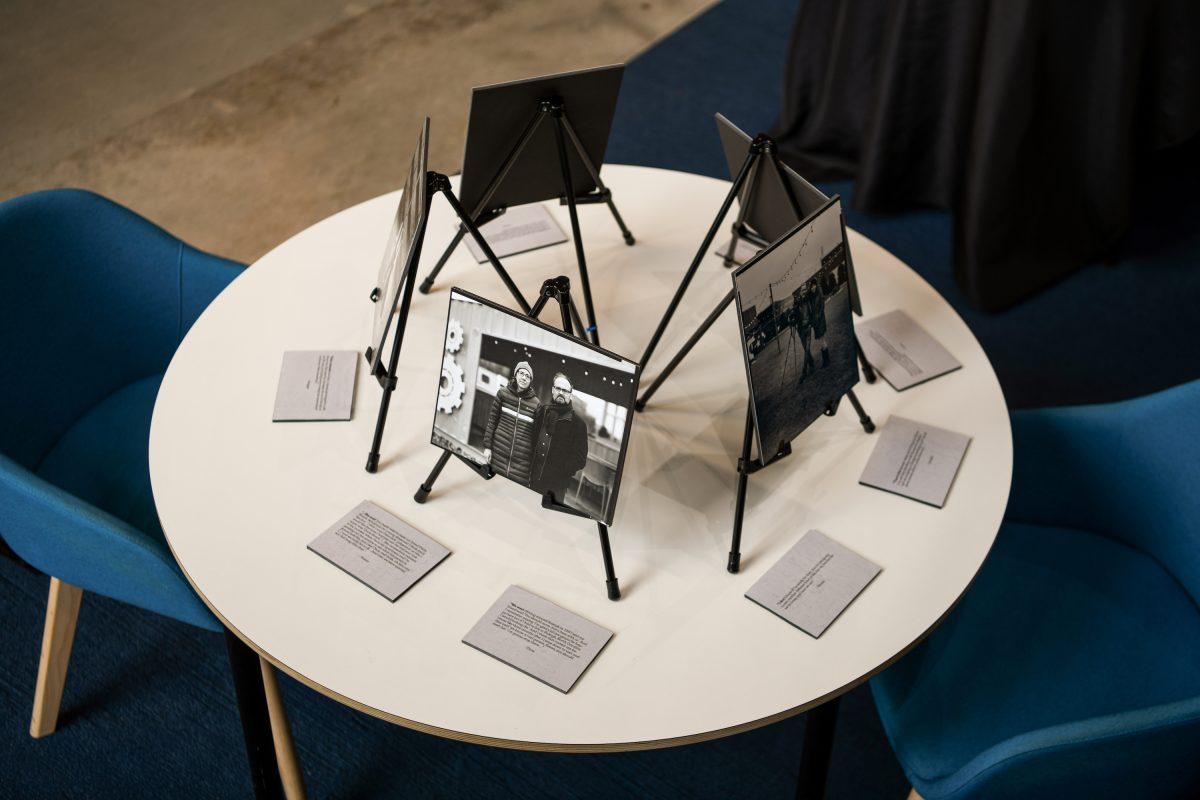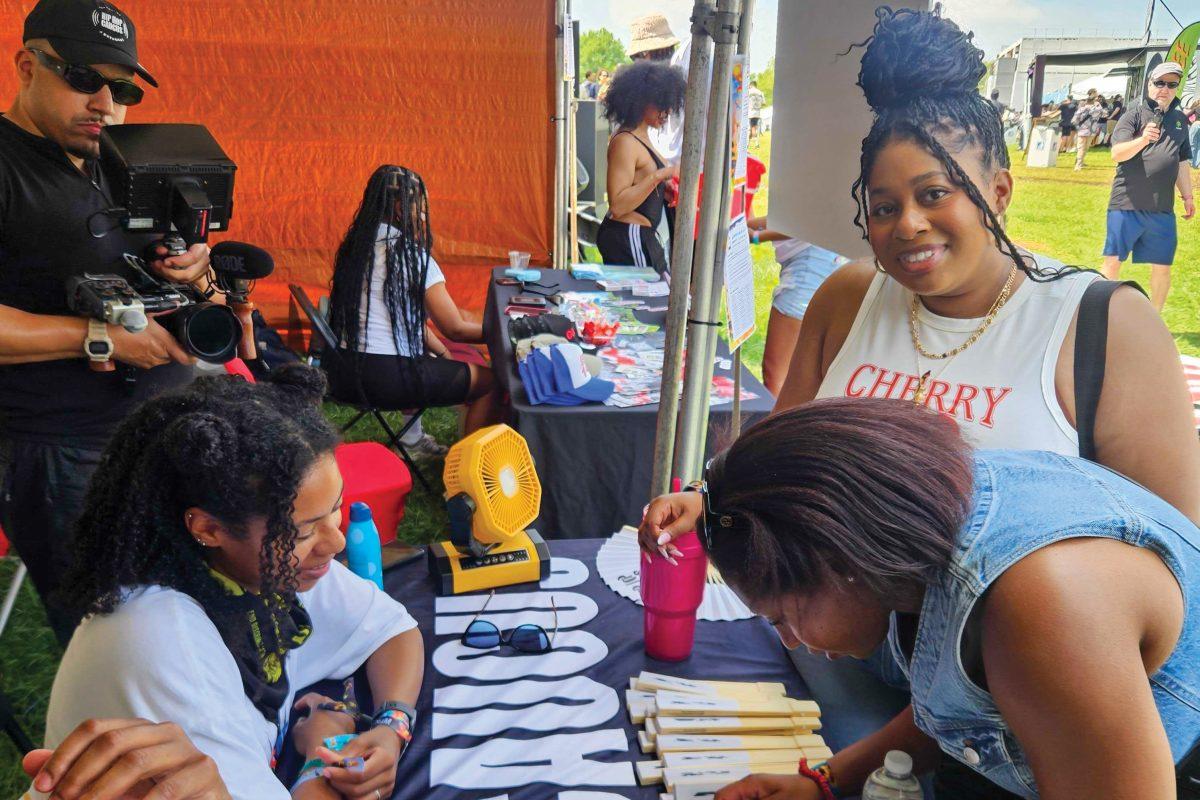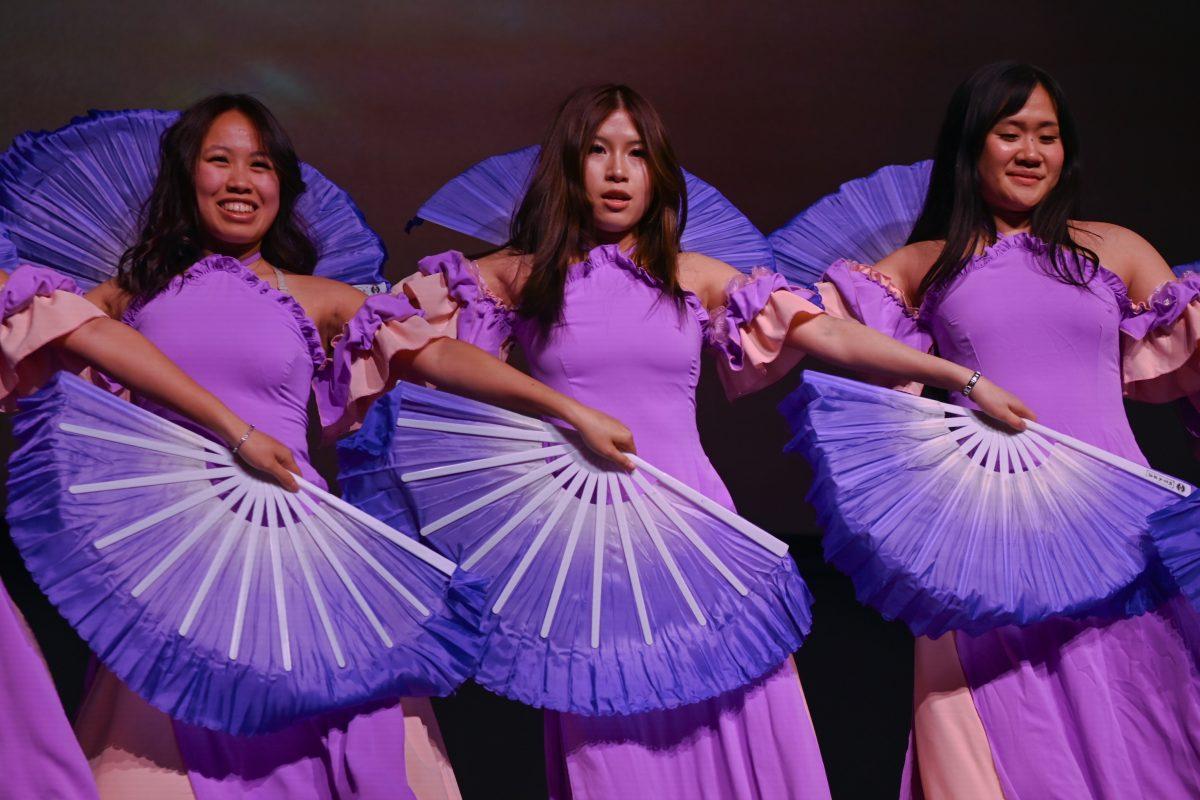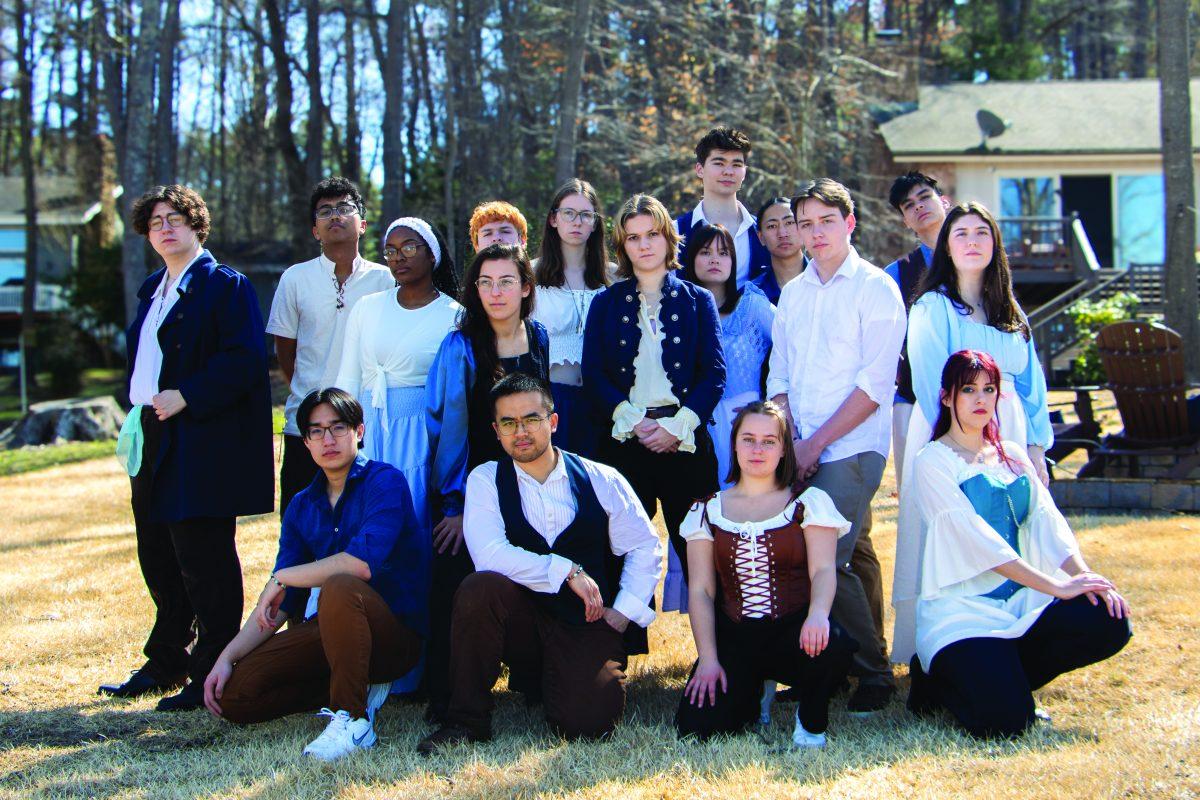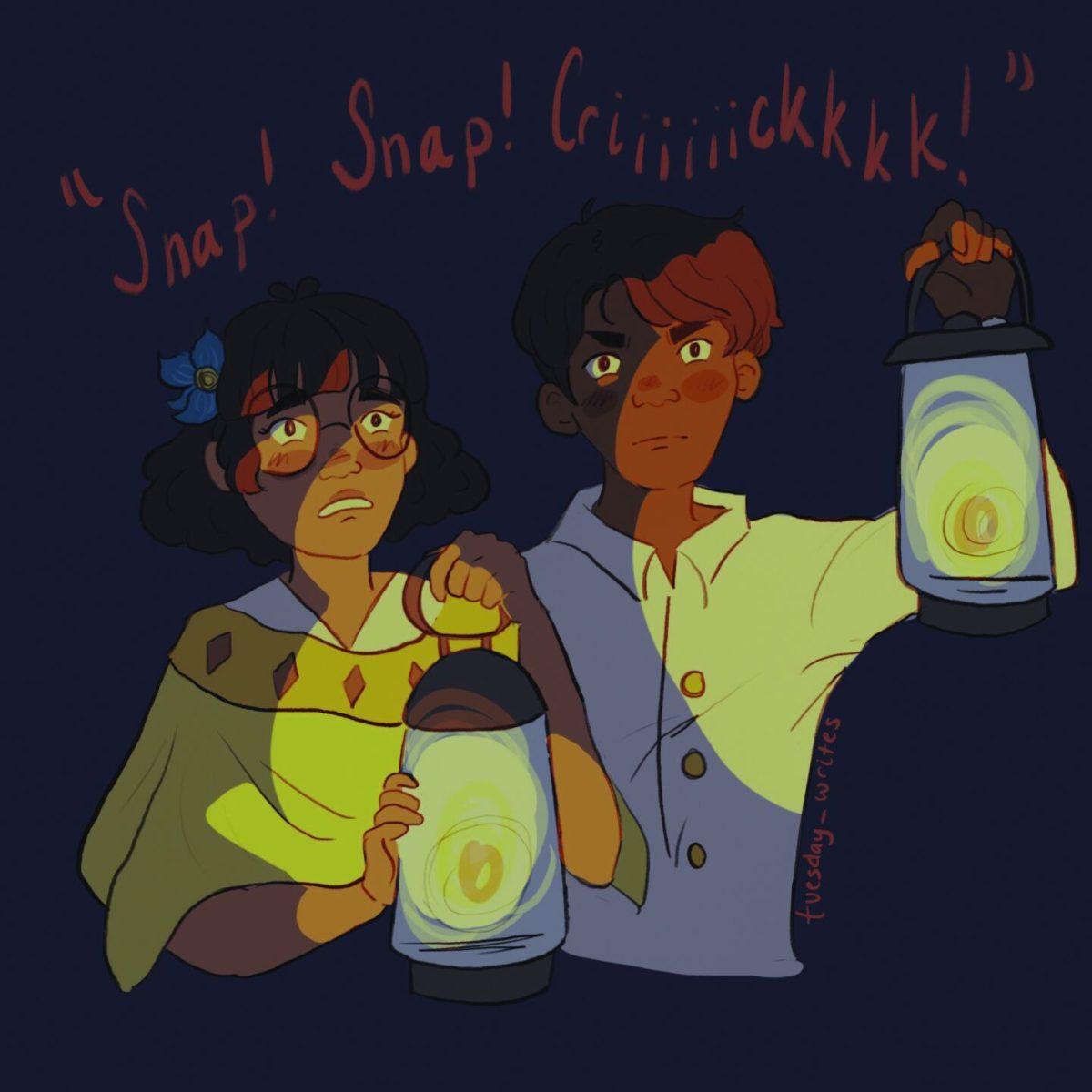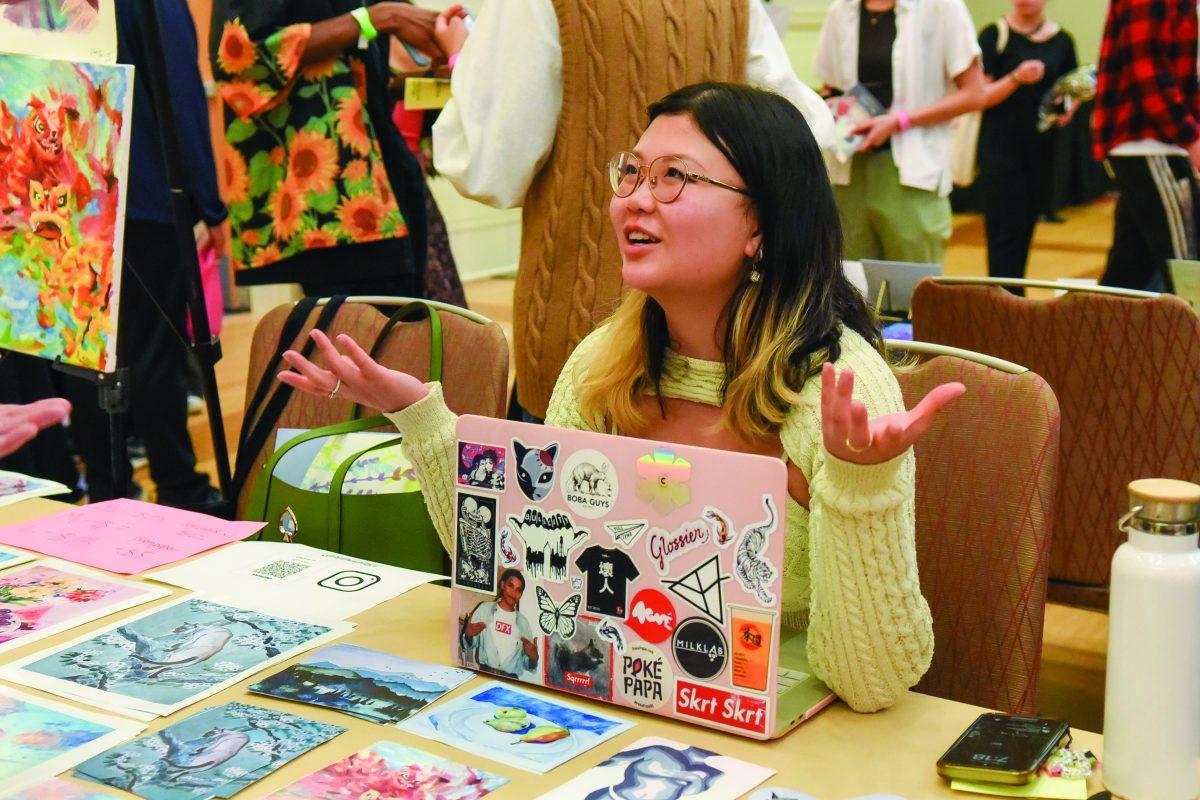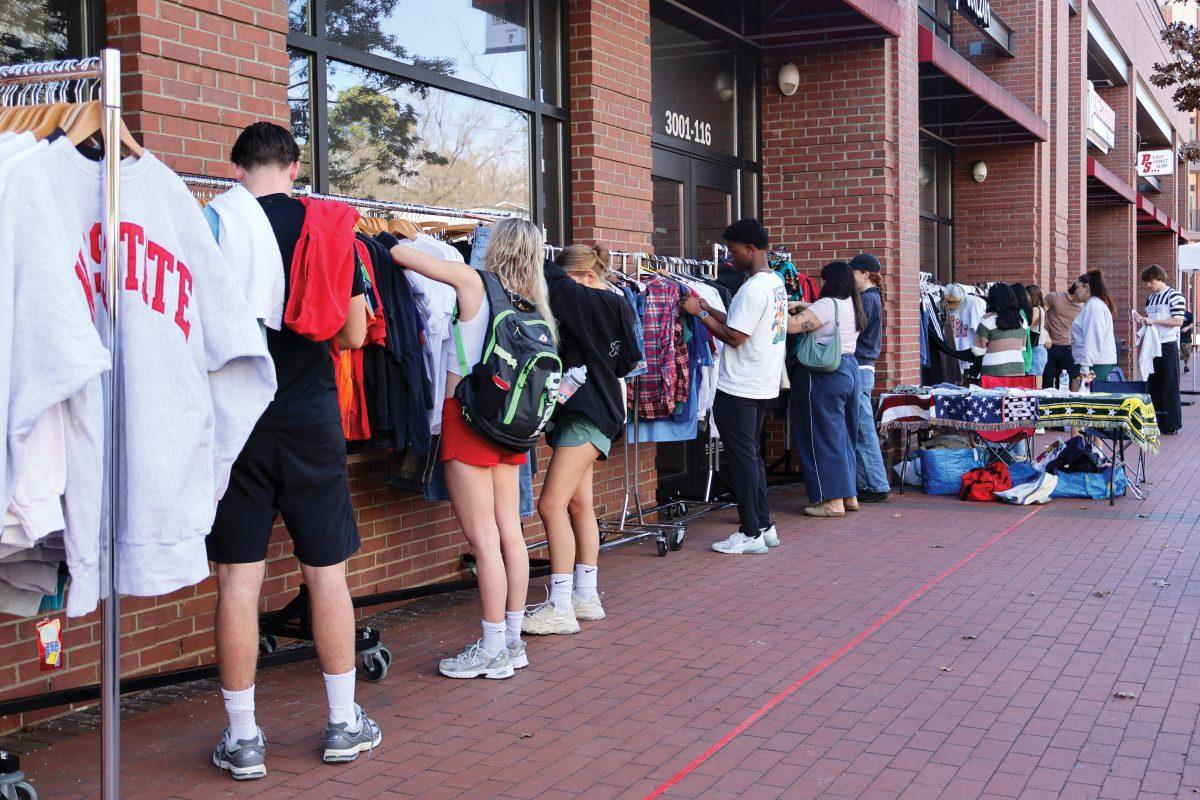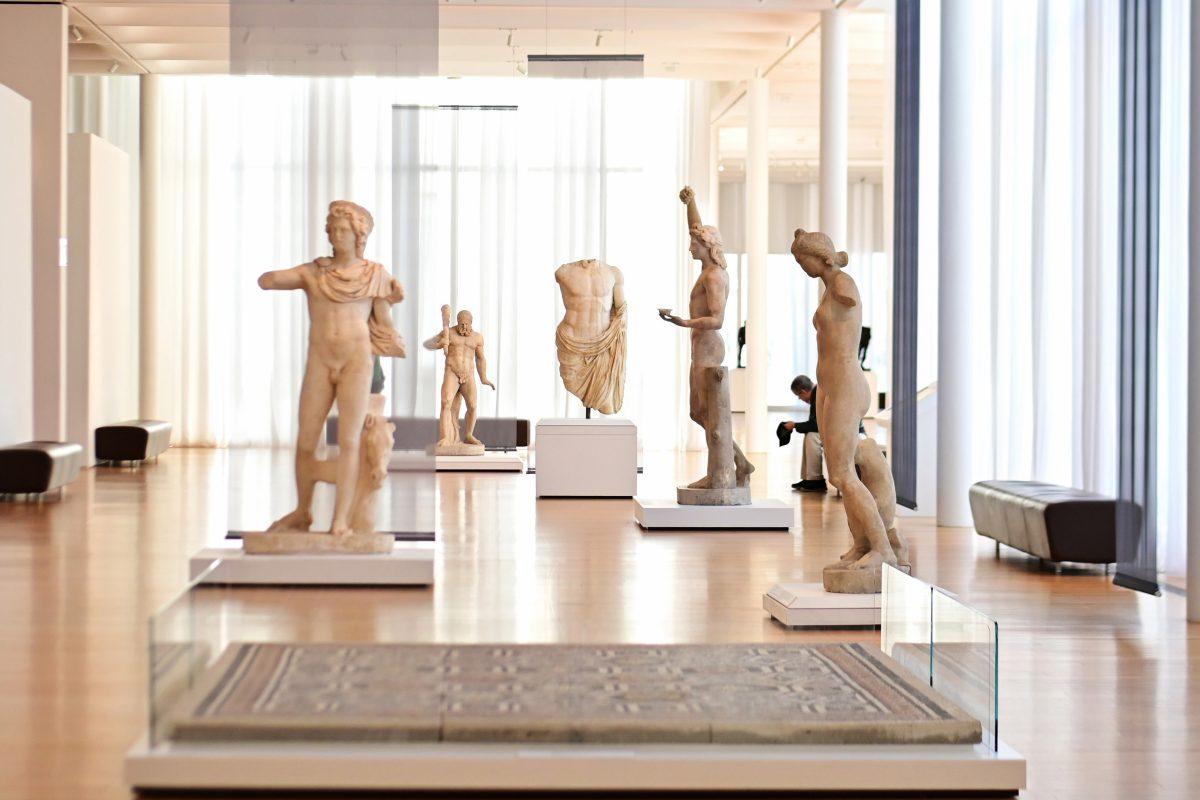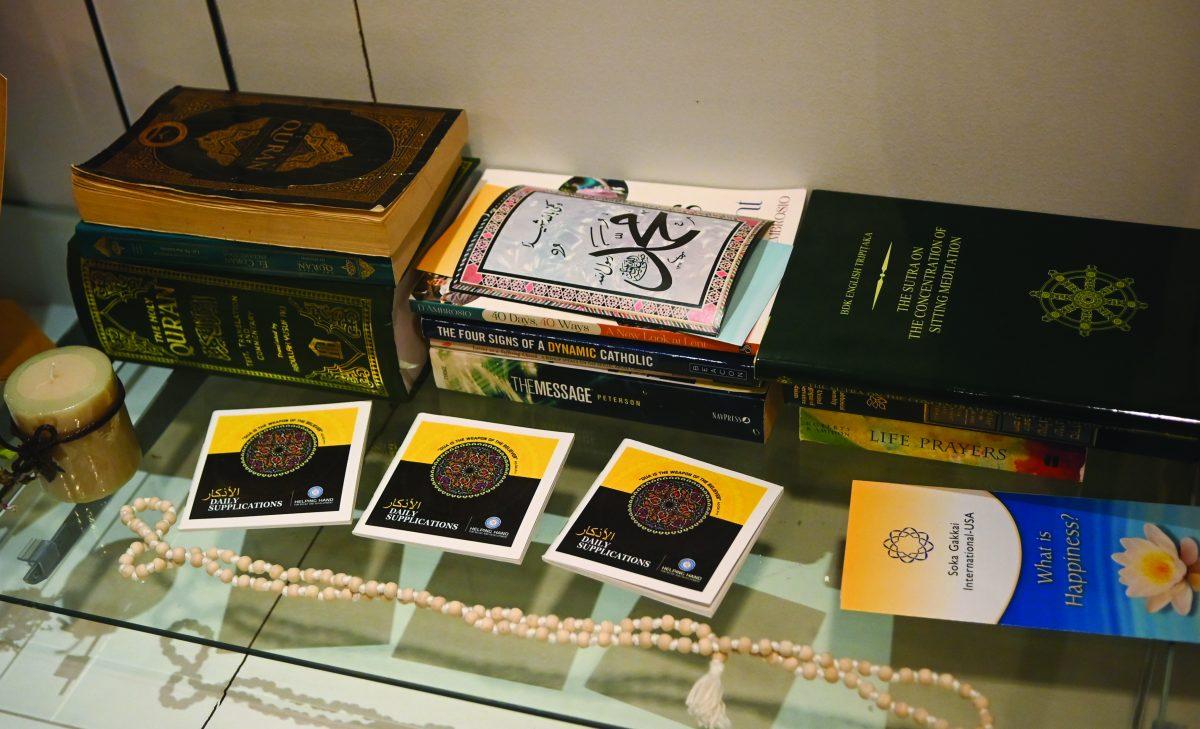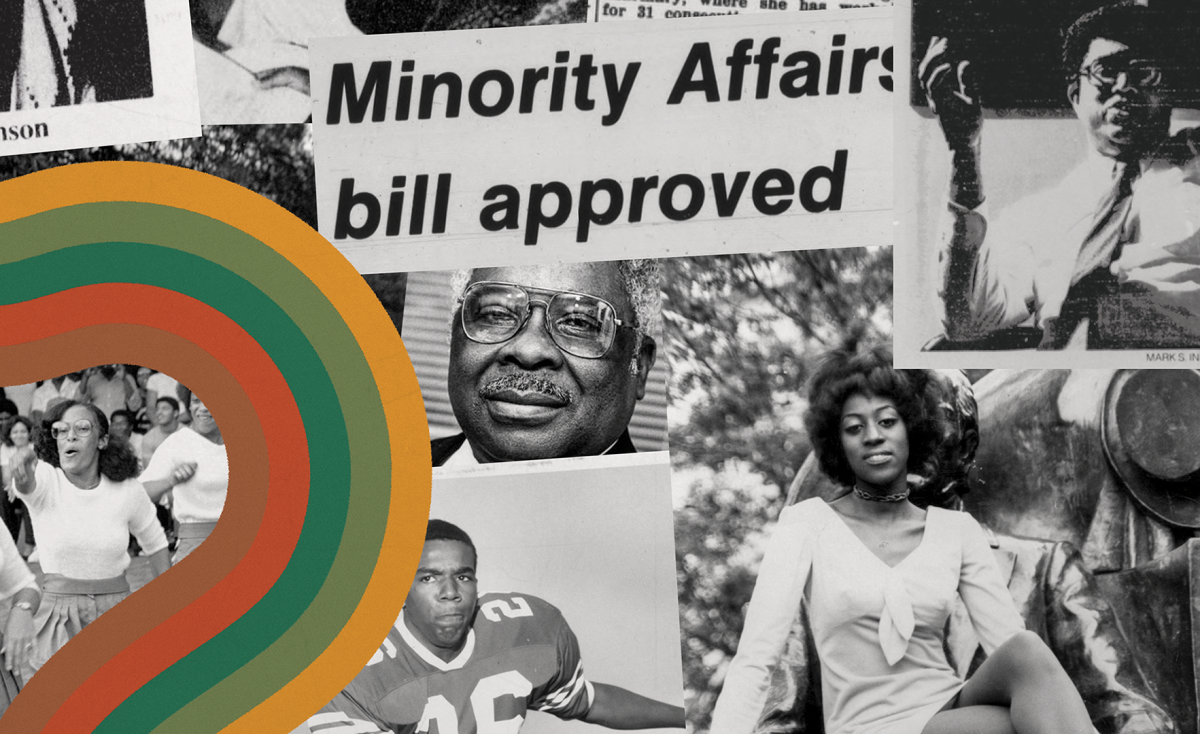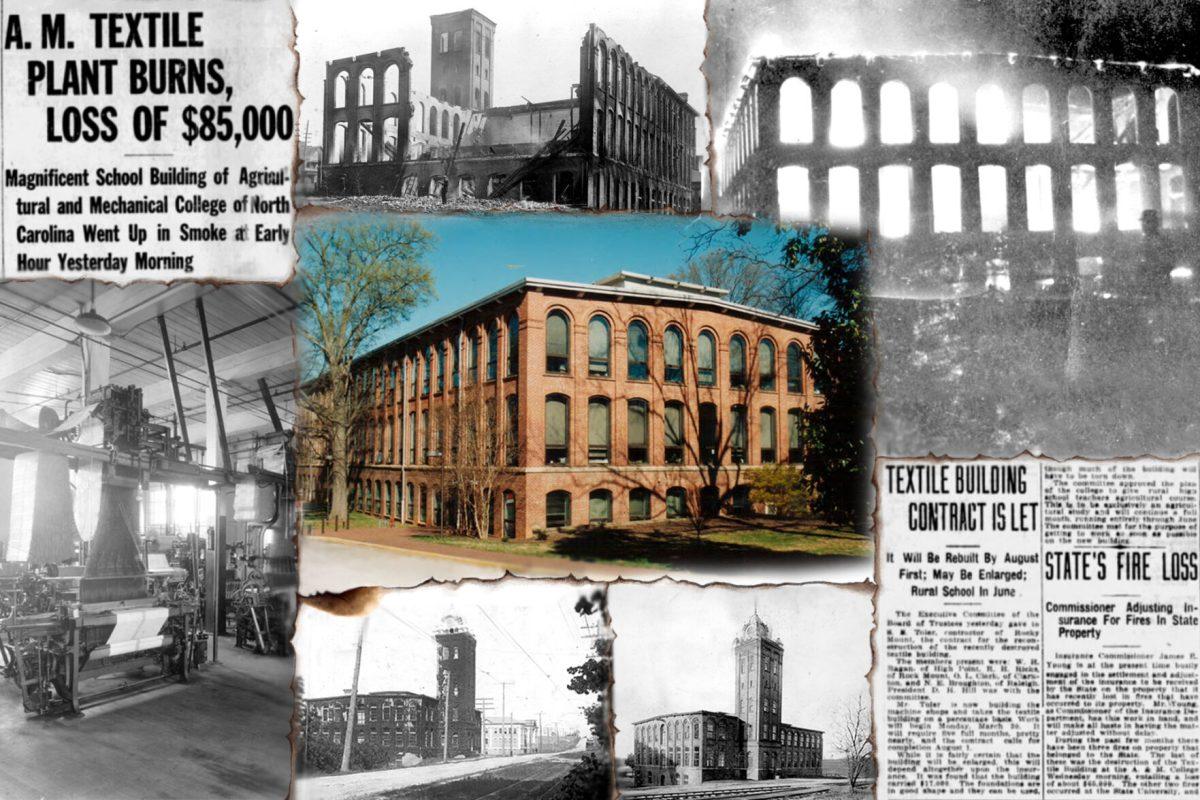Monica Jane Frisell and Adam Scher travel the country with a full, mobile darkroom coined the Nomadic Photo Ark, capturing and recording individuals’ stories as part of their project “Portrait of US.”
Since July 2021, Frisell and Scher have visited Vermont, New York, Georgia, Colorado, Ohio and Florida. In each location, they invite people to sit for a recorded interview and share pivotal moments in their lives. Frisell then photographs the participants on 8-by-10-inch film with a Kodak Master field camera.
Through a partnership with the Crafts Center, the Nomadic Photo Ark spent the beginning of February at NC State, photographing and recording stories of those on campus, culminating in a pop-up exhibit on Friday, Feb. 10 on Centennial Campus.
The exhibit featured 30 portraits of students, staff and Raleigh locals along with quotes from their interviews. Audio recordings of these interviews played in the background as attendees and participants wandered through the portrait displays.
“Being able to leave a set of the prints and stories is really nice, because it ends up being a time capsule of what life was like,” Scher said. “It’s pretty small. It’s only 30 people. But it’s a little bit of an insight of what life was like this week on campus. That’s another part of the project, to create a snapshot of people’s stories right now.”
Frisell and Scher said conversation in combination with the process of analog photography creates authentic connection.
“I just see almost more of a collaboration between me and the person who’s sitting with me,” Frisell said. “Especially after the conversation, it really just allows us to sit together. It’s only like, a minute or two minutes, but it still makes it easier for me to feel good about taking the portrait. … I’ve never been able to capture that same kind of personal focus if I’m shooting digitally.”
The large format of 8-by-10 film allows Frisell to create contact prints where they lay the negative directly on the paper before exposure rather than suspending negatives above the paper with smaller film. This introduces directness and intimacy to the portraits.
“There is that element of the light [that] hits that one negative and then that negative is touching the paper,” Frisell said. “And that’s about as close to that specific moment as you can get physically.”
This intimacy was evident in the final prints. Kate Scheer, a second-year studying mechanical engineering, participated in the exhibit. Though Scheer doesn’t often like photos of herself, she enjoyed Frisell’s final print of her.
“Every single person looks really nice, but it’s not like that shiny sort of Instagram photo,” Scheer said. “It’s just a really raw candid photo. I think it kind of catches a glimpse of someone raw, as they are. [That] is what makes it so beautiful.”
Scher said he has been struck by common threads that repeat through the nearly 300 stories they’ve recorded across the country.
“As you talk to that many people, you kind of see similarities in their stories … that are independent of where they live, their independent socioeconomic status, for the most part,” Scher said. “We asked folks to share an important moment in their life, so those are often overcoming obstacles. But I think it’s important to share that everyone’s overcoming some pretty similar stuff in their life, especially right now.”
Frisell created the Ark in the context of feeling trapped in the early stages of COVID-19. Frisell and Scher found it meaningful during this time to simply give people a space to be listened to.
“It’s important to give folks a chance to talk,” Scher said. “We are not therapists, but what ends up happening, a lot of the time, can be similar to talk therapy. It lets people talk about and share stories. And I think that people don’t really realize how important that can be because they don’t really get to do that. It’s not something that happens often where you’re sitting down and spending a good chunk of time talking to someone personally, especially coming out of COVID, especially in 2023.”
Scheer found this to be true, encouraged by the open and welcoming environment of the Ark.
“I did not expect to talk for so long,” Scheer said. “I’m a talkative person, but I didn’t think I [had] that much of a story. But I did. And it meant a lot. … At the end I was sitting there like, ‘Why am I about to cry?’ … They get you to open up way more than you think you would to people you met 10 minutes ago.”
The moments that participants talked about in their interviews ranged from changes in fields of study to when they met their partners and displayed a wide range of ages and life experiences. Scheer said Frisell and Scher’s interview skills helped to draw these moments out of her.
“They’re like ‘What’s a pivotal moment in your life?’” Scher said. “I’m just like ‘I’m 19. What life? My life is too short for pivotal moments. Are you kidding me? come back when I’m 60.’ … It’s kind of funny because I think I was talking about something entirely different … and somehow it got back to high school or something. I mentioned one teacher, and it clicked. I was like, ‘Oh, I know what a pivotal moment [is].’”
Frisell, who started film photography in high school, said she has always been drawn to the idea of nomadic storytelling that captures identities across the entire country.
“Through my 20s, I was doing a lot of similar work,” Frisell said. “I would take six months and live out of my car and photograph people, photograph just the country in general. I’ve been always really obsessed with the country. As much as I love and hate it at the same time, I just am fascinated by it.”
Though the Ark’s route currently depends on where Frisell and Scher can find funding, they hope to one day have more control over where they go and whose stories they elevate.
“I want to be able to go into even smaller towns, especially in the southwest and the deep south, places that don’t have arts funding,” Frisell said.
Keep up with Frisell and Scher’s work on “Portrait of US” through the Nomadic Photo Ark Instagram, podcast and newsletter.


